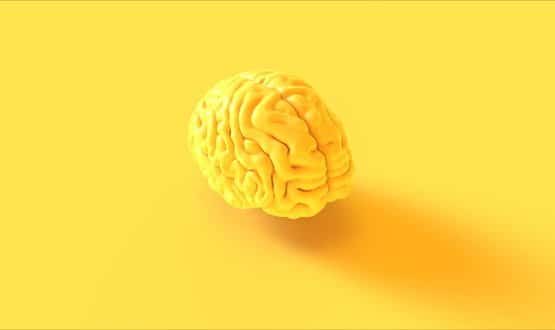How digital tools and platforms can help mental health services
- 24 March 2020

As the nation deals with social distancing and staying indoors more as a result of the outbreak of Covid-19, concerns have been raised about the impact this could have on people’s mental health. James de Bathe, director of partnerships at Ieso Digital Health, explores how online mental health services could be a better way of reaching the UK population.
According to Public Health England, one in six adults will have experienced a common mental health disorder in the past week. Now more than ever the NHS is under tremendous pressure to provide mental health care to millions of people.
This substantial need for mental health services means that waiting lists can be long and, with the access targets continually increasing, the NHS is struggling to meet the demand. Hard to reach communities, such as ethnic minorities, older populations and young people, are particularly badly affected by the reality of mental health services working at almost full capacity.
So, could a more digital approach improve access to treatments for mental health disorders?
The NHS Five Year Forward View for Mental Health stated that one in four adults experiences at least one diagnosable mental health problem in any given year.
With the stigma around mental health being slowly overcome, the number of requests to access an already congested NHS mental health service is significantly growing as people acknowledge their need for help.
Geographical challenges
Another challenge is the geographical distance to treatment. The British Medical Association (BMA) revealed that thousands of people were sent more than 30 miles away for mental health services.
In rural areas, it is common to travel long distances for many NHS services, but even in cities people are affected because of traffic and transport. For people out of work, the cost and time required to travel to appointments is particularly prohibitive. This means that some patients do not or cannot access mental health services simply because of the logistical challenge.
Technology can help remedy these access issues. Digital tools can reach everyone, even the most secluded communities. They can improve communication with health care professionals while taking some of the pressure off the NHS.
This is why the Five Year Forward View for Mental Health has identified the expansion of access to digital services as vital to enable more people to receive effective care.
Improved patient access
With the aim to reduce waiting lists and deliver an effective and seamless experience for NHS mental healthcare patients, online platforms can provide accessible one-to-one appointments anytime, anywhere to individuals with mild to moderate mental health disorders.
For instance, steps2change, has significantly reduced its waiting times for adults referred to Lincolnshire Partnership NHS Foundation Trust after introducing one to one online cognitive behavioural therapy (CBT) via instant messaging. This facility can be mobilised rapidly, ahead of waiting lists becoming excessive, and offers people the added benefit of flexibility and choice in terms of the time and location they receive therapy.
Modern secure digital communication can be used to build bridges between individuals and mental health services and deliver much needed end-to-end care and emergency help to patients in crisis.
The inclusion of digital solutions is needed to enable more people to seek treatment, continue to engage, and remain in touch if they need additional support and follow-up. From identifying the condition, obtaining a specialist referral to therapy itself, digital methods can make a big difference and help the NHS reach the government patient referral targets and outcomes in all areas in the UK.
Patient and clinical engagement
NHS England’s Five Year Forward View for Mental Health has emphasised the need for more patient and clinician engagement. Digital services can connect someone in need of mental health support with a professional. People use devices and applications almost every day, so digital platforms can easily be embedded in a patient’s daily routine as part of their treatment.
As part of an any qualified provider (AQP) model for Surrey Healthlands, six mental health providers work side by side to encourage their patients to reach for support that suits their lifestyle. This introduces freedom of choice for patients and puts the onus on suppliers to reach individuals who may be suffering from mental health conditions.
Surrey Heathlands achieves its access targets and the 18-week waiting time targets and recovery rate targets are consistently met. It’s a great example of how competitors can work together to meet an entire region’s objectives and provide the best possible care to local communities.
Joined-up care is at the core of the NHS long-term plan. It involves increasing access to mental health services with the help of technology. Digital solutions help achieve just that, by bringing together primary care, therapists and patients to work more closely and effectively. Despite first impressions, these tools are not just for younger generations. We have had patients in their 90s successfully completing treatment.
Digital solutions are a sustainable answer to release some pressure on clinical commissioning groups. Technology enables mental health provision geographically dispersed patients while helping mitigate the possibility of vulnerable people being left out and not receiving the care they need. It puts mental healthcare back into the hands of the individuals, and ultimately helps democratise access and improves the quality of treatments provided by the NHS to the UK population.





1 Comments
I was a BAPCP registered psychotherapist administering CBT.I worked with Consultant Psychiatrists and treated people with complex psychological needs. All patients had an Psychiatric Diagnosis ( DSM V). Done properly this cannot be done on line. I was able to draw brain chemistry reactions; neurone transmissions to enable an understanding of how medication or talking therapy may help change brain chemistry: explanations of models of therapy ( every psychological illness has a different model for treatment guidance). EMDR is one treatment medium. EMDR Therapy requires up to 90 minutes of therapy each session to allow for emotional and cognitive changes after processing. Digital on line talking therapies may be successful for those with mild/ moderate illness state. Anything more complex than depression or anxiety/ stress related disorders requires assessment from a Consultant Psychiatrist and a referral to a Therapist as per NICE guidelines. Questionnaires need to be completed prior to and after treatment and one year after to be able to measure claims that treatment is successful.
Comments are closed.